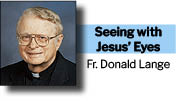
Catholics celebrate the Feast of the Holy Rosary on October 7.
This feast originated in 1571 after a coalition of outnumbered papal forces called the Holy League defeated a huge Turkish fleet that attempted to invade Europe.
If the Turks had won, Christianity’s history in Europe would surely have been different.
St. Pius V ordered the churches of Rome to stay open for prayer day and night.
He encouraged the faithful to petition the intercession of the Blessed Virgin Mary through the recitation of the Rosary for victory.
When word of the victory of the Holy League reached St. Pius, he added the Feast of Our Lady of Victory to the Roman liturgical calendar.
The pope was not applauding the carnage of the battle but was expressing gratitude that Christians were still free to follow Jesus. He firmly believed that the triumph of the Holy League was due to Mary’s intercession.
Pope Gregory XIII, St. Pius’s successor, changed the name of this day to the Feast of the Holy Rosary. This feast invites us to reflect upon the Rosary’s mysteries.
Through the Rosary’s Joyful, Luminous, Sorrowful, and Glorious Mysteries, we review the story of our redemption.
St. Paul VI once called the Rosary a form of spiritual television during which we try to visualize each mystery as we pray the “Hail Marys”.
The Rosary is a Scripture- based prayer. It begins with the Apostles’ Creed which summarizes the great mysteries of the Catholic faith. It also includes “Our Fathers” from Scripture and “Glory Bes” which praise and acknowledge our Triune God.
The first part of the “Hail Mary” contains the angel’s words announcing Christ’s birth and Elizabeth’s greeting to Mary.
St. Pius V added the second part of the “Hail Mary” when we ask Mary to pray for us now and at the hour of our death.
The Rosary’s repetition can lead us into restful and contemplative prayer related to each mystery. The gentle repetition of the words helps us to enter into the silence of our hearts, where the Holy Spirit dwells.
The Rosary can be said privately or with a group. When I visited the late Fr. Joe Brickl in a nursing home, he excused himself by saying, “It’s time to pray the Rosary.” He said, “I pray it alone; but I like to pray it in a group because Jesus said, ‘Where two or three are gathered in my name, I am in their midst.’’’ Good thinking!
Fr. Joseph Krempa wrote, “Many prisoners of war remarked that they prayed the Rosary in their cells by using the fingers of their hands. Doing so helped them maintain sanity and hope.” He added that the Rosary’s beauty is that it is a prayer for people of every culture. This includes the young who cannot yet read, seniors, and everyone in between.
It is also a prayer for spiritual victory over the temptations and evils of our time.
Today we have our own battles to fight. There is the violence of terrorism and war. There is economic war, cultural war, political war, racial war, and spiritual war. Cleverly packaged secular atheistic humanism which denies our need for God may tempt us to follow its ways. We are all involved in some way in a war for the soul of our culture by what we do and fail to do!
October can remind us of Venerable Fr. Patrick Peyton, the Irish priest who founded the Family Rosary Crusade.
He staged massive Rosary rallies in key cities of the world and extensively used mass communication. Recognized celebrities of Hollywood, including Loretta Young, Gregory Peck, and Bing Crosby, helped to unite families through prayer and the family Rosary.
Father Peyton was a popular charismatic figure in Latin America and the Philippines where he promoted the Rosary and was known for his strong Irish accent.
He popularized the phrases “The family that prays together stays together” and “A world at prayer is a world at peace”.
During October we honor Mary both as Mother of God and as our spiritual mother by praying the Rosary and in other ways. October also includes the feasts of St. John Paul II (October 22) and of Canadien Blessed Marie-Rose Durocher (October 6), who loved Mary.
October begins with the memorial of St. Thérèse of the Child Jesus.
The French Carmelite wrote that she was drawn especially to Mary not because she is Queen of Heaven, but because she is our mother.
Let us rejoice that we are children of so great a spiritual mother.
Let us continue to pray the Rosary as a family, as a parish, or by ourselves.
Fr. Donald Lange is a pastor emeritus in the Diocese of Madison.

